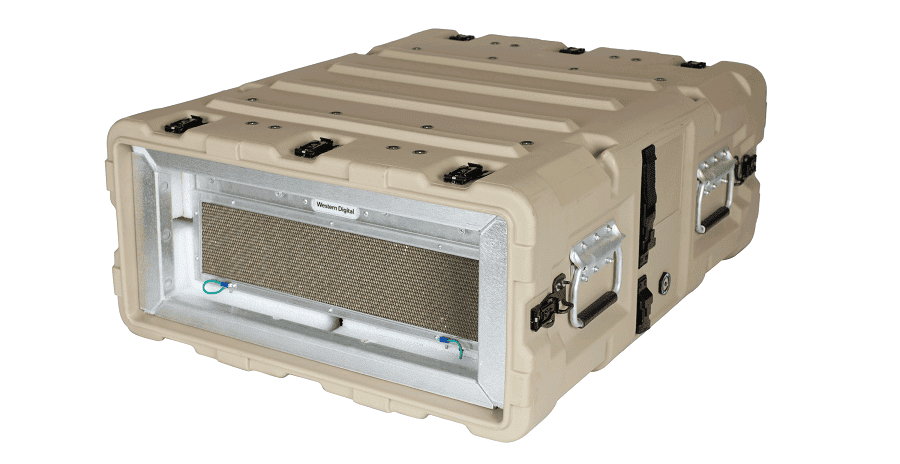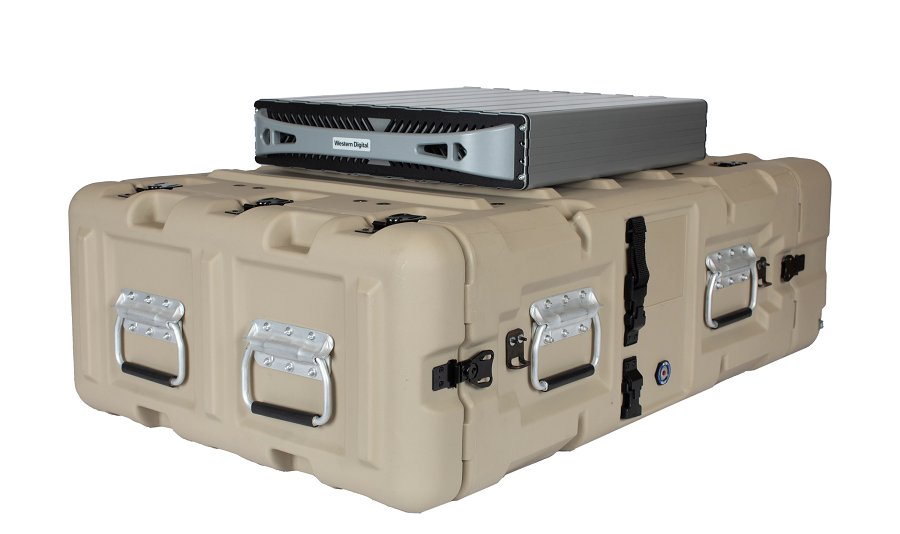New Ultrastar Edge servers, including a rugged MIL-spec version, reduce latency and improve bandwidth, enabling organizations to easily transport, deploy, secure and analyze data in real-time
Providing the foundation for the world’s essential data infrastructure, Western Digital (NASDAQ: WDC) today announced the availability of its new high-performance Ultrastar® Edge server family that brings compute closer to where data is generated for faster processing, lower latency and real-time decision making, even when disconnected.
With the growing adoption of 5G, IoT and the cloud, businesses and consumers expect super-fast performance with their applications. This is creating demand for new, distributed intelligent architectures outside of core data centers to help ingest, analyze and transform data at the edge.
In addition, organizations are running applications in extremely remote locations, such as deserts, seas or jungles, and are driving the need for ruggedized compute and storage where networks can be expensive, intermittent or nonexistent.
Designed for cloud service providers, telcos and system integrators, Western Digital’s Ultrastar Edge servers are easy to transport, deploy and scale in the field, at colocation (colo) facilities, in a factory, or in remote data centers.

The new family includes the Ultrastar Edge-MR, an extremely rugged, stackable and transportable server for military and specialized field teams working in harsh remote environments, and the Ultrastar Edge, a transportable 2U rack-mountable server with a portable case for colos and edge data centers. Both solutions are now sampling and orderable with general availability beginning CQ4 2021.
“More compute capacity is needed at edge locations as latency-sensitive applications are proliferating. We expect server deployments at edge locations to double through 2024, totaling an estimated five million units as they are an essential component in enabling new innovations and products, cloud services, remote campuses, CDNs, and virtually any vertical industry that relies on IoT, sensor or remote data,”
said Manoj Sukumaran, senior analyst, Data Center Compute at Omdia.
“In the world of 5G and IoT, compute must happen at the edge – closer to devices, end-users and the machines that are generating the data – as latency and bandwidth are essential factors for success. We’re glad to see Western Digital enter the market as the industry needs reliable products from vendors they can trust.”
“As a storage technology leader, we’re constantly looking ahead and anticipating how we’ll continue to serve our customers’ needs,”
said Kurt Chan, vice president, data center platforms at Western Digital.
“The growth in data creation at the edge, the opportunities to extract value from that data, and the total available markets and customers innovating and doing work at the edge, gives us a great opportunity for our new Ultrastar Edge server family.”
“From healthcare to intelligence missions, it’s critical for the federal government and its agencies to gather information quickly, and deliver insight when and where it’s needed, including at the network’s edge,”
said Jeff Johnson, co-founder, Aeon Computing.
“We’re thrilled to have the new Ultrastar Edge-MR server in our arsenal, as meeting these stringent military specs is no small feat. We can now deliver a secure, rugged solution that brings the power of the cloud to virtually any edge or tactical environment around the world.”

The core of each Ultrastar Edge solution is a durable, high-speed server that supports up to 40 cores with two 2nd Intel® Xeon® Scalable Processors, an NVIDIA® T4 GPU and eight Ultrastar NVMe™ SSDs providing up to 61TB of storage.
This unique combination delivers blazing speeds and capacity for real-time analytics, AI, deep learning, ML training and inference, and video transcoding at the edge. It features two 50Gb or one 100Gb Ethernet connection for sending critical data back to the cloud or data center when connected.
Article was first published on NaijaTechGuide with title Western Digital Fuels Faster Decision Making at the Edge and in Harsh Remote Environments



